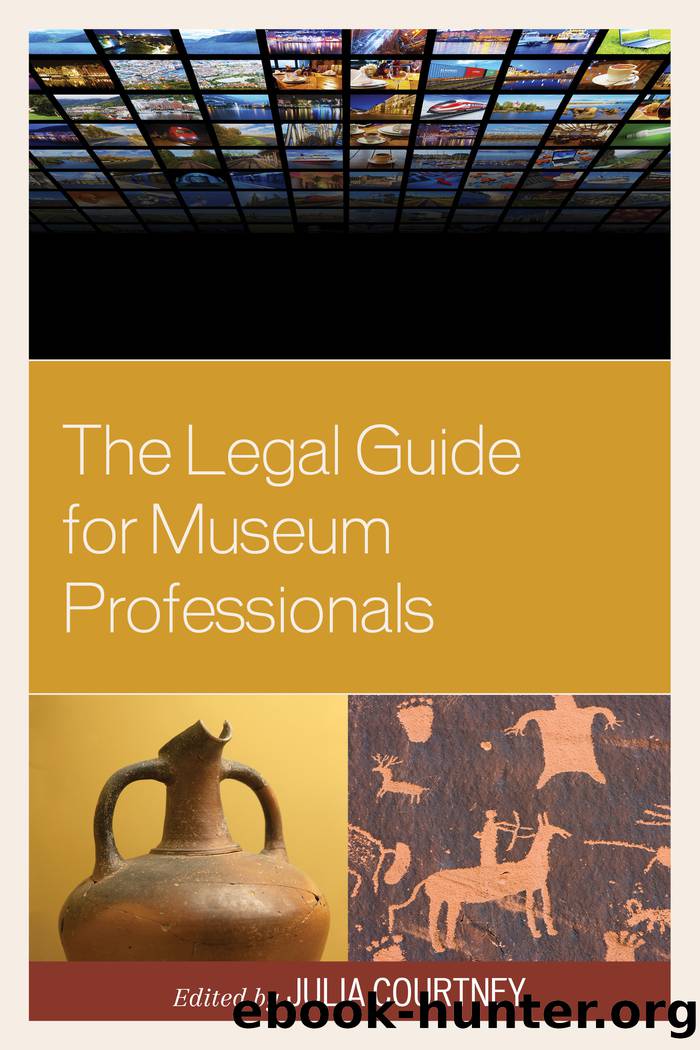The Legal Guide for Museum Professionals by Courtney Julia;

Author:Courtney, Julia;
Language: eng
Format: epub
Tags: undefined
Publisher: Rowman & Littlefield Publishers
Published: 2012-08-15T00:00:00+00:00
Conclusion
One goal of this essay was to explore how museums resolve the tension between the desire to keep deaccessioned objects in the public domain and the desire (and perhaps duty) to achieve the best financial result for the disposing museum. The reality is that any tension is almost always resolved by selling deaccessioned objects in a manner designed to maximize the proceeds to the selling museum without regard to whether or not the objects remain in the public domain as a result.
The New-York Historical Society and the Brooklyn Museum represent deviations from that normal practice of such magnitude as to make them watershed moments. Even as deviations, however, they provide lessons of greater applicability. This is so even though the effort to keep objects in the public domain was imposed upon the New-York Historical Society by the attorney general of the State of New York and the effort by the Brooklyn Museum was driven by its own board.
One of the lessons learned is that geography matters. It mattered to the New York attorney general that the collection of the New-York Historical Society remain in the state of New York. It mattered to the board of the Brooklyn Museum that its costume collection remain in the city of New York. Even the modest incentives offered by Thomas Jefferson University and the New York Public Library demonstrated at least a sensitivity to local concern and the potential for local criticism. And, clearly, the experience of the Higgins Armory Museum demonstrates the high priority given toâand facility of transaction provided byâgeography.
In thinking about geography, it is probably more accurate to refer to political boundaries, rather than proximity. In four of the five instances cited, the neighboring state of New Jersey was equally convenient for public access, but likely a world away in terms of an acceptable outcome.
Mission is important as well. A boardâs sense of its mission informs its willingness to sacrifice proceeds for public access. There was clear and strong consensus on the part of the board of the Brooklyn Museum that its costume collection was of such significanceâand so integral toâthe city of New York as a capital of fashion that it was unthinkable that the highest quality and most important objects from the collection would be dissipated among smaller museums and private collections.
Similarly, the fact that the Higgins collection had its genesis in the obsessive collection of a local steel manufacturer whose business included the production of âdoughboy helmetsâ during World War I, embedded the museum and its collection in the history of the city. To have it moved even down the turnpike to Boston would have been a blow to the city that had been its home since it opened to the public in 1931. Likewise, protecting the core of the collection was perceived to be at the heart of the museumâs mission for both the Brooklyn Museum and the Higgins Armoryâof higher priority than the incremental monetary benefit of selling it to the highest bidder.
Mission is also what informs an attorney general of his or her role in the transaction.
Download
This site does not store any files on its server. We only index and link to content provided by other sites. Please contact the content providers to delete copyright contents if any and email us, we'll remove relevant links or contents immediately.
European Witch Trials (RLE Witchcraft) by Richard Kieckhefer(85)
Constitutional Law by Erwin Chemerinsky;(77)
Sentencing and Artificial Intelligence by Ryberg Jesper;Roberts Julian V.;(77)
Solve Your Money Troubles by Amy Loftsgordon;Cara O'Neill;(68)
Dictionary of American Criminal Justice by Dean J. Champion(58)
The Eternal Criminal Record by James B. Jacobs(55)
Roman Law and Economics by unknow(52)
The Supreme Court's Role in Mass Incarceration by William T. Pizzi(50)
Revitalizing Victimization Theory by Travis C. Pratt Jillian J. Turanovic(48)
Crime and the Life Course by Michael L. Benson(48)
The Legal Guide for Museum Professionals by Courtney Julia;(43)
Policing the Police : Knowledge Management in Law Enforcement by Petter Gottschalk(43)
Law for Student Police Officers by Merritt Jonathan;(43)
Juvenile Risk and Needs Assessment by Christopher J. Sullivan Kristina K. Childs(42)
Incarceration without Conviction by Mikaela Rabinowitz(42)
Transnational Penal Cultures by Vivien Miller James Campbell(41)
A Constitution for the Living by Beau Breslin(41)
Juvenile Homicides : A Social Disorganization Perspective by Minna K. Laurikkala(38)
Lawyers, Lead On by Williford Rebecca S.;Basas Carrie A.;Enyart Stephanie L.;(36)
